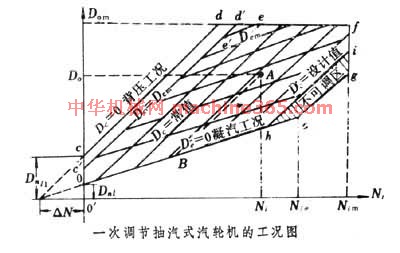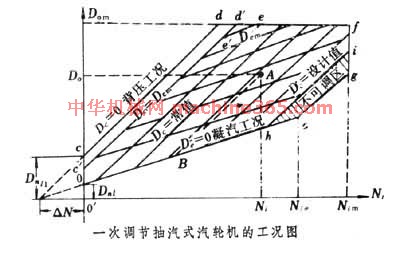|
|
|
说明:双击或选中下面任意单词,将显示该词的音标、读音、翻译等;选中中文或多个词,将显示翻译。
|
|
|
1) bubble dynamic behaviors

汽泡动力学行为
1.
The main purpose of the present thesis is to clarify the characteristics of bubble dynamic behaviors and phase-change heat transfer during nucleate boiling heat transfer process in capillary microgrooves experimentally, so as to gain comprehensive understanding of enhanced heat transfer mechanisms in this heat sink and lay the foundation for the design of micro-cooling system.
本文旨在通过对竖直放置的开放式毛细微槽群中厚液膜区域液体核态沸腾过程进行实验研究,揭示毛细微槽群热沉中的汽泡动力学行为规律及其高强度沸腾相变换热机理,从而为高性能微槽群相变散热系统的设计及发展提供依据。
2) bubble dynamics

汽泡动力学
1.
In this paper on the basis of the classical bubble dynamics, a new model is brought forward for the bubble growth in a nucleation boiling system-the comprehensive interface model.
本文在经典汽泡动力学理论基础上,提出了描述汽泡生长过程的综合界面模型。
2.
Based on single bubble dynamics, several factors influencing the bubble departure in flow boiling under microgravity are qualitatively analyzed, and then an explanation on bubble departure under certain working conditions is put forward.
从单个汽泡动力学着手定性地分析了影响微重力下流动沸腾中汽泡脱离的几个因素,提出了对汽泡脱离的一种理解:在一定工况条件下,如果已产生的汽泡在垂直于流动的方向上能够为新产生的汽泡持续提供足够空间,在平行于流动的方向上它又能随着两相流动及时地滑移开,即可以实现微重力下流动沸腾中汽泡的持续脱离,为微重力下核态沸腾的形成提供可能。
3.
A model of the boiling bubble was presented based on the bubble dynamics.

根据汽泡动力学原理,建立了壁面上沸腾汽泡的数学模型。
3) bubble behavior

汽泡行为
1.
The experiment apparatus to apply to study the bubble behavior in gas-liquid-solid three phase circulating fluidized bed is designed and built by oneself in this paper.
本文自行设计并建立了一套用于研究汽泡行为的单管汽—液—固三相循环流化床实验装置,开发了用于研究汽泡行为的化工过程多相流图像分析系统,并利用该系统研究了不同工况下的汽泡行为,利用Matlab语言实现了实验结果的可视化。
4) microbubble dynamics

微汽泡动力学
1.
Microscale boiling and microbubble dynamics under pulse heating

脉冲加热下微尺度沸腾及微汽泡动力学
5) dynamics behavior

动力学行为
1.
On the study of the dynamics behavior of rockburst system, according to mechanics conditions and geological circumstances of rockburst, the two state variable model is introduced to describe the dynamics behavior and evolvement behavior of rockburst.
分析表明:模型中参数 K,β对冲击地压系统动力学行为和状态变量演化行为贡献较大,而系统动力学和演化行为对? , f 初值的敏感性相对较低。
2.
The spatiotemporal dynamics behavior and system characteristic has been discovered for a new system coupled by some chaotic systems with same structure.
研究了相同结构的混沌系统耦合后所得到的新系统的时空动力学行为及其系统特性。
3.
Then, the relationship between amplification ratio of error amplifier and dynamics behavior of this converter is investigated by numerical method.
首先利用KCL和KVL定律导出了三阶DC DCBUCK功率变换器的分段光滑的动力学方程,然后用数值方法研究了误差放大器的放大倍数与这种变换器的非线性动力学行为的关系。
6) dynamic behavior

动力学行为
1.
Comparative analysis for dynamic behaviors of phosphorylated proteins related to the epidermal growth factor and insulin signal transduction systems;
小鼠肝细胞胰岛素与EGF信号转导磷蛋白质组的动力学行为对比分析
2.
Research on dynamic behavior of flexible four-bar linkage;

柔性四杆机构动力学行为研究
3.
Dynamic Behavior Analysis and Control Theory Research of Scraper Conveyor;

刮板输送机动力学行为分析与控制理论研究
补充资料:动力机械:抽汽式汽轮机
由汽轮机中间级抽出一部分蒸汽供给用户﹐即在发电的同时还供热的汽轮机。根据用户需要可以设计成一次调节抽汽式或二次调节抽汽式。 一次调节抽汽式汽轮机 又称单抽汽式汽轮机。由高压部分和低压部分组成﹐相当于一台背压式汽轮机与一台凝汽式汽轮机的组合。新汽进入高压部分作功﹐膨胀至一定压力后分为二股﹐一股抽出供给热用户﹐一股进入低压部分继续膨胀作功﹐最后排入凝汽器。抽汽压力设计值根据热用户需要确定﹐并由调压器控制﹐以维持抽汽压力稳定。单抽汽式汽轮机的功率为高﹑低压部分所生产功率之和﹐由进汽量和流经低压部分蒸汽量所决定。调节进汽量可以得到不同的功率。因此﹐在一定范围内﹐可同时满足热﹑电负荷需要。单抽汽式汽轮机在供热抽汽量为零时﹐相当于一台凝汽式汽轮机﹔若将进入高压缸的蒸汽全部抽出供给热用户﹐则相当于一台背压式汽轮机。但实际运行中﹐为了冷却低压缸﹐带走由于鼓风摩擦损失所产生的热量﹐必须有一定量的蒸汽流过低压部分进入凝汽器﹐所需最小流量约为低压缸设计流量的10%。单抽汽式汽轮机的工况如图 一次调节抽汽式汽轮机的工况图 所示﹐它表示出新汽量(D0)﹑抽汽量(Ce)﹑电功率(Ni)三者之间的关系﹔图 一次调节抽汽式汽轮机的工况图 中Dc表示凝汽量﹐oh线为抽汽量为零时的凝汽工况线﹐cd线为抽汽量等于新汽量时的背压工况线﹐在以上两线之间为等抽汽量与等凝汽量工况线﹐它表示在不同抽汽量下与不同凝汽量下全机电功率与蒸汽流量的关系。在最大抽汽量下汽轮发电机组的最大电功率如图 一次调节抽汽式汽轮机的工况图 中e 点所示﹔图 一次调节抽汽式汽轮机的工况图  中如已知Do﹑De ﹑Dc和Ni 4个量中的任何两个量﹐可求得另外两个量。 中如已知Do﹑De ﹑Dc和Ni 4个量中的任何两个量﹐可求得另外两个量。
二次调节抽汽式汽轮机 又称双抽汽式汽轮机。可以同时满足不同参数的热负荷。整个汽轮机分为高﹑中﹑低压 3部分。新汽进入高压部分作功﹐膨胀到一定压力﹐抽出一部分蒸汽供给热用户﹔另一部分进入中压部分继续膨胀作功后﹐再抽出一部分供暖﹐其余蒸汽经过低压部分排入凝汽器。
说明:补充资料仅用于学习参考,请勿用于其它任何用途。
参考词条
|












 中如已知Do﹑De ﹑Dc和Ni 4个量中的任何两个量﹐可求得另外两个量。
中如已知Do﹑De ﹑Dc和Ni 4个量中的任何两个量﹐可求得另外两个量。 